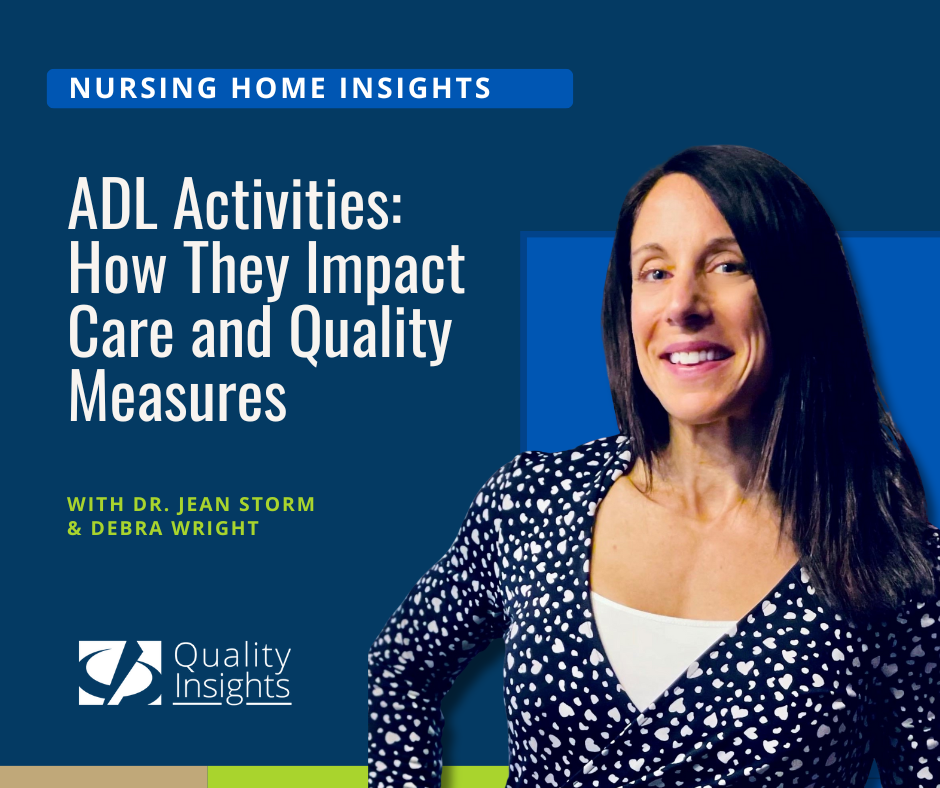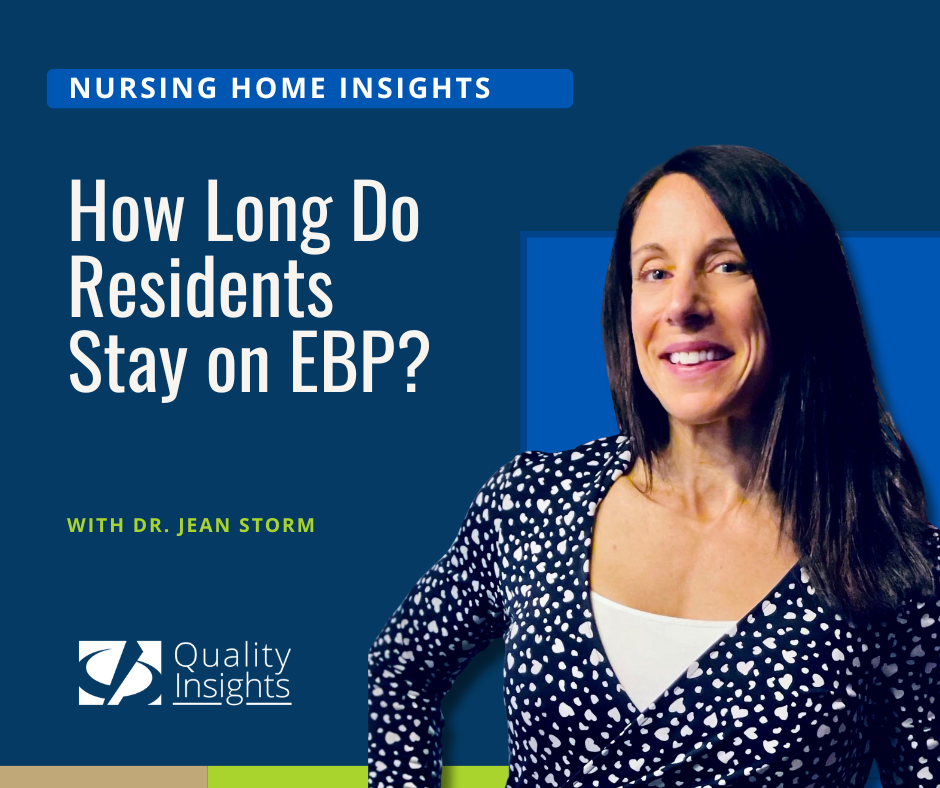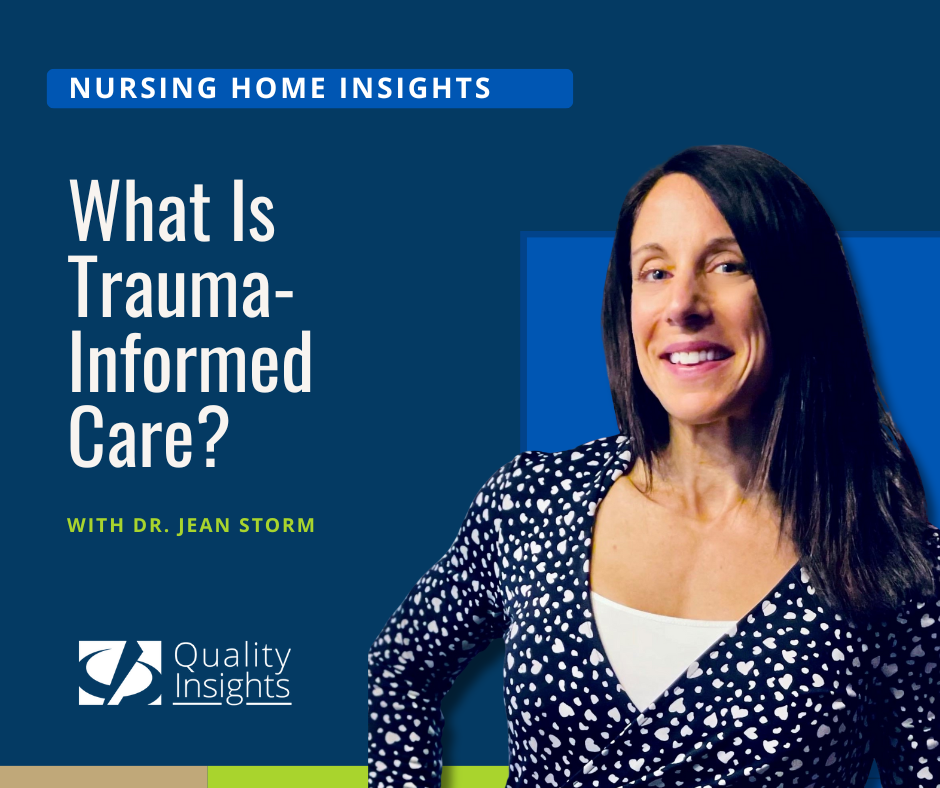ADL Activities: How They Impact Care and Quality Measures
What Are ADL Activities? A Clear Definition The Cleveland Clinic defines Activities of Daily Living (ADLs) as essential tasks we perform each day...
4 min read
Dr. Jean Storm and Debra Wright, RN, BSN, RAC-CT : Jul 1, 2025 10:17:20 AM
The Cleveland Clinic defines Activities of Daily Living (ADLs) as essential tasks we perform each day that support our basic physical health and survival. These tasks are sometimes called physical ADLs because they relate directly to the body’s everyday needs—like bathing, eating, or using the toilet. Understanding ADLs is key to providing appropriate care for individuals with changing health or mobility needs.
From the moment we are born, we all perform ADLs either independently or with some form of assistance. As a baby, we depend on our parents/guardians to ensure that our self-care ADLs are met – bathing, feeding, dressing. As we get older, we learn more mobility ADLs tasks, such as walking, toileting and eventually we become independent in completing our own ADLs. As we continue to age, or maybe suffer from an illness/accident, we may need some degree of assistance completing or relearning our ADL tasks. Whether due to age, illness, or injury, many people may need help with ADLs at some point, and understanding this natural progression helps inform compassionate care.
Basic ADLs provide a framework for evaluating an individual’s functional ability. Here is a chart adapted from the Cleveland Clinic that outlines common ADL tasks:
| ADL | What It Involves |
| Bathing | Using soap, water, towels and other supplies to wash, rinse and dry your skin. Standing, sitting or moving in ways that allow you to bathe every part of your body. |
| Personal hygiene and grooming | Oral care, hair care, and grooming activities using items like deodorant or nail clippers. |
| Toileting and continence | Getting to the toilet, managing hygiene, and controlling bladder and bowel function. |
| Eating and feeding | Chewing, swallowing, and using utensils to bring food to the mouth. |
| Dressing | Selecting clothes and putting them on in the correct order, including handling fasteners. |
| Moving/transferring | Shifting from one position or place to another, such as bed to chair or room to room. |
In nursing homes, documenting ADL support is critical for care planning, staffing, and regulatory compliance. Typically, nursing assistants record the level of assistance each resident receives, which feeds into the Minimum Data Set (MDS). The MDS is a standardized tool used in Medicare- and Medicaid-certified facilities to assess residents' health and function.
According to the RAI (Resident Assessment Instrument) Manual, “Activities of daily living are those needed for self-care and mobility” and include tasks such as bathing, grooming, oral care, ambulation, dressing, toileting, eating, transferring, and communicating. Data from Section GG helps classify residents into therapy and nursing components under the Patient-Driven Payment Model (PDPM).
Section GG of the MDS evaluates a resident’s ability to perform self-care and mobility tasks over time. It includes observations on admission, throughout the stay, and at discharge. This section also records the use of assistive devices and any limitations in range of motion.
A resident’s ability can change over the course of their time at the nursing home. Residents in short-term rehab may improve their ADLs with therapy, while long-term residents may need ongoing support to maintain their current level of function. In some cases, therapy can help a resident return home or to their previous level of functioning. Whether recovering or adapting, Section GG ensures each resident’s functional potential is accurately captured and addressed.
Recognizing and adapting to small changes in daily function can make a big difference in quality of life. At home, healthcare providers may recommend simple modifications—like removing rugs or installing grab bars—or suggest physical or occupational therapy to regain strength and balance.
In nursing homes, allowing residents to participate in their own ADLs—rather than having staff complete the tasks for them—promotes autonomy and better health outcomes. Even if it takes more time or adaptive tools, encouraging independence supports dignity, reduces health risks, and leads to longer, healthier lives.
Therapists play a vital role in maintaining and improving residents’ ADL performance. According to the RAI, functional decline can lead to serious consequences including depression, social isolation, respiratory issues, and pressure injuries.
Qualified therapists assess the need for services and tailor interventions to help residents reach or maintain their highest level of functioning. Therapy supports independence, improves quality of life, and can sometimes enable a safe return home.
Restorative Nursing Programs (RNPs) bridge the gap between therapy and daily care. As defined in the RAI, these programs focus on helping residents adapt and function as independently and safely as possible.
RNPs are particularly beneficial after formal therapy ends, allowing residents to maintain their gains through structured interventions. These programs must include measurable goals, be documented in the care plan, and evaluated regularly by a licensed nurse. While daily tasks may be completed by trained staff, oversight by licensed nursing professionals ensures consistency and quality.
ADL scoring in Section GG of the MDS plays a significant role in shaping a facility’s Quality Measures (QMs) and overall care quality rating. Like many other areas of the MDS, how you code ADL tasks directly affects your quality scores. Two function scores are calculated: the total nursing function score and the total OT/PT function score.
The nursing function score includes:
The OT/PT function score includes all of the above, plus:
Each ADL activity in Section GG is assigned a score:
These GG scores are then converted into function scores:
These scores contribute to key Quality Measures. For short-stay residents, the Discharge Function Score is directly impacted. For long-stay residents, the relevant QMs include Residents Whose Ability to Walk Independently Worsened and Residents Whose Need for Help with Activities of Daily Living Increased.
About Co-Author Debra Wright, RN, BSN, RAC-CT
Debra Wright is a Quality Improvement Specialist at Quality Insights. She holds over thirty years of nurse leadership experience within the long-term care industry. Starting out as a certified nursing assistant, she grew as the industry grew. Debra held many key clinical leadership roles in non-profit and for-profit organizations, as well as a university based retirement community. As a quality improvement specialist, she’s most passionate when working with the MDS process and Quality Improvement.

What Are ADL Activities? A Clear Definition The Cleveland Clinic defines Activities of Daily Living (ADLs) as essential tasks we perform each day...

If you've ever asked, "How long do residents stay on Enhanced Barrier Precautions (EBP)?"—you're not alone. This is a common question among nursing...

Let’s define trauma-informed care and explore how trauma-informed care practices and principles support the emotional and physical well-being of...
